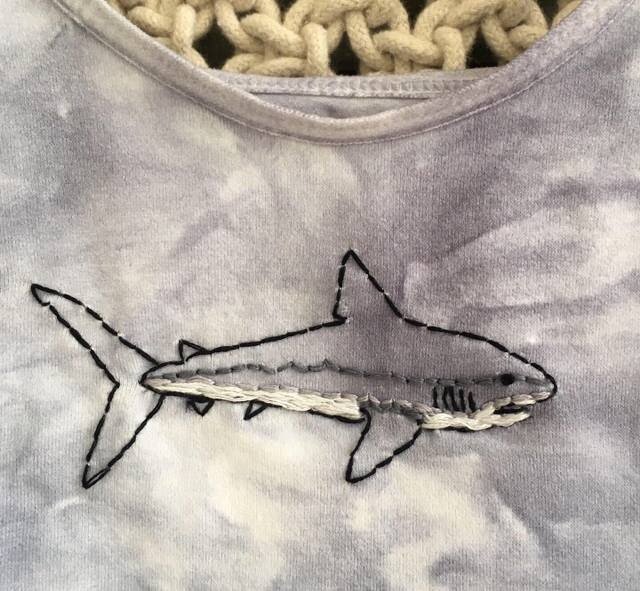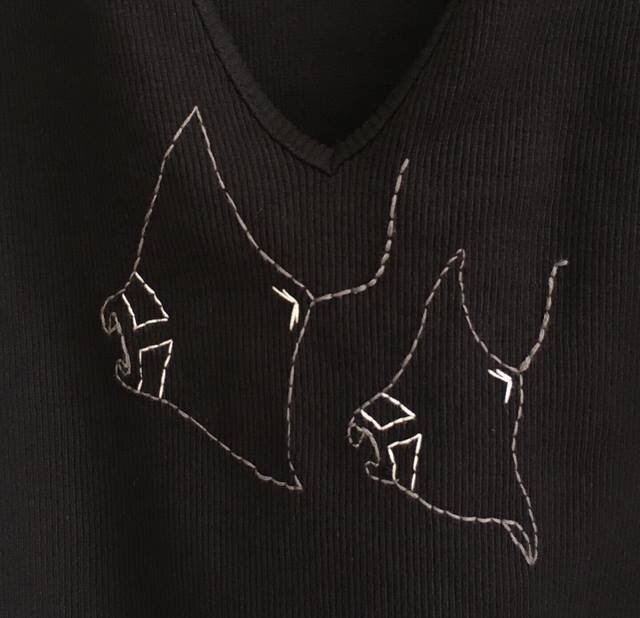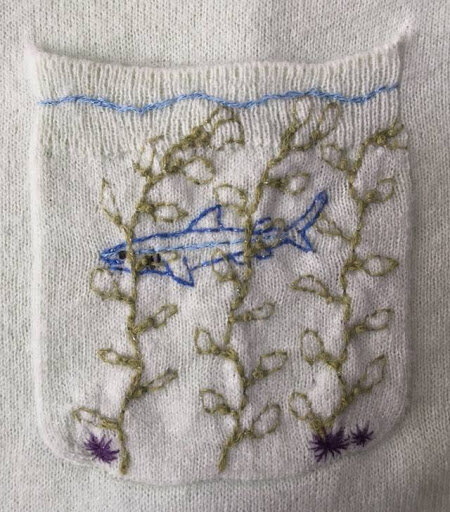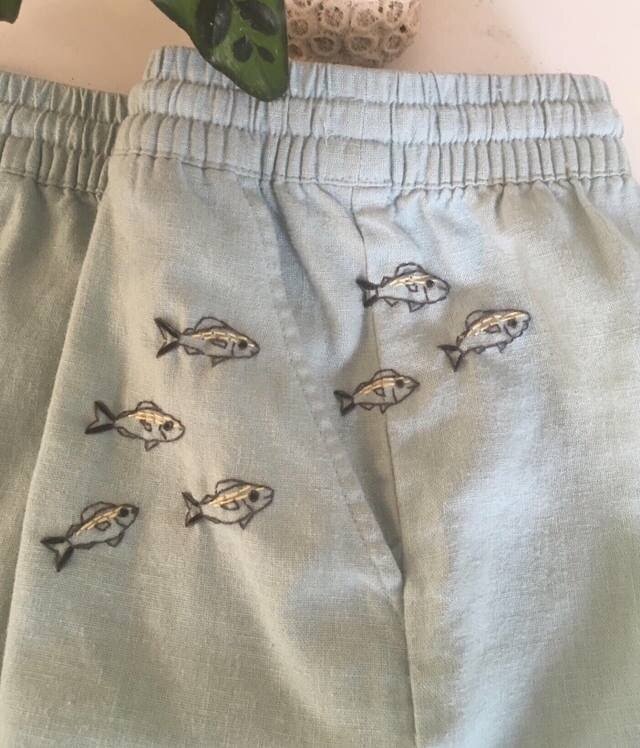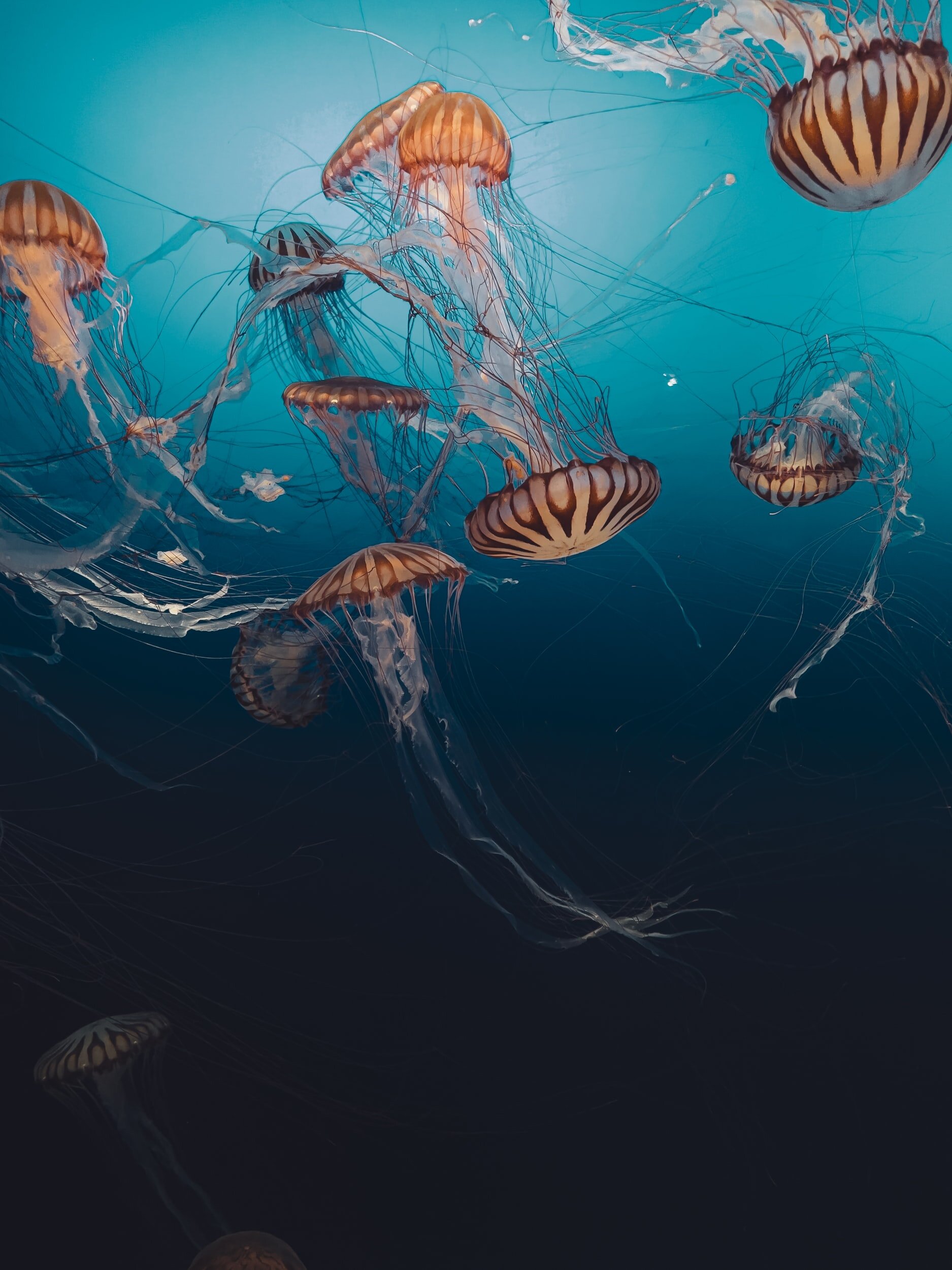
Alison Atchia’s Marine Scenes Embroidery
Alison runs a small embroidery store with a portion of the proceeds donated to conservation organizations. You can read more about it here.
Alison’s initiative is a testament to her artistic vision, her entrepreneurial spirit, and her dedication to helping the ocean, one embroidery at a time. She embroiders quaint marine scenes on articles of clothing, often featuring a re-imagining of historical paintings with a twist…see below.
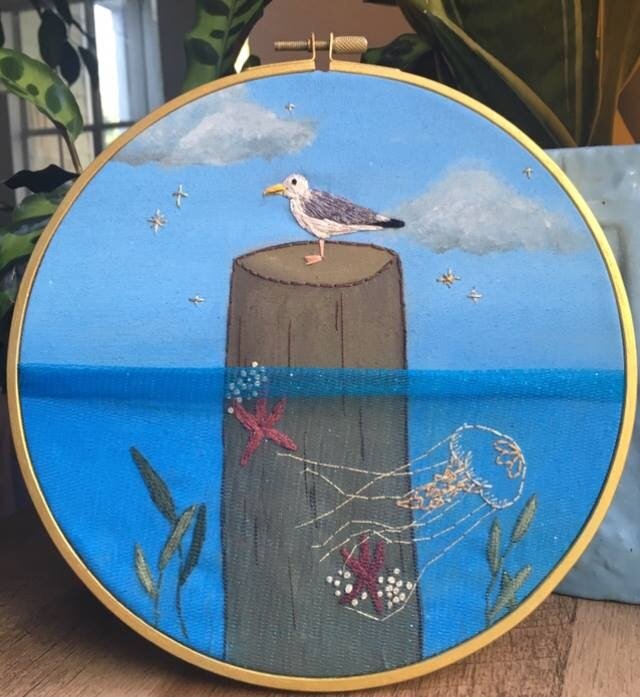
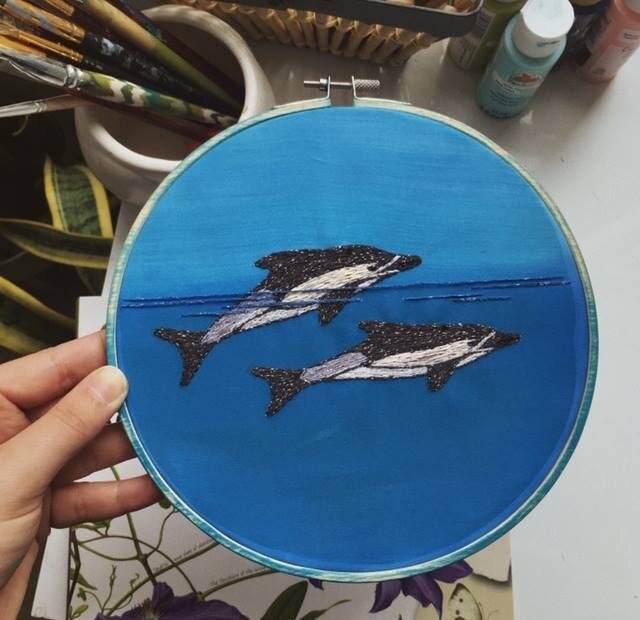
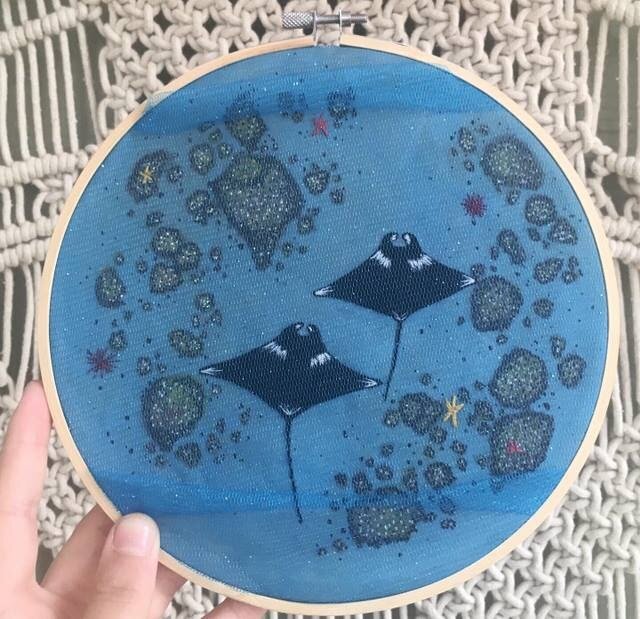
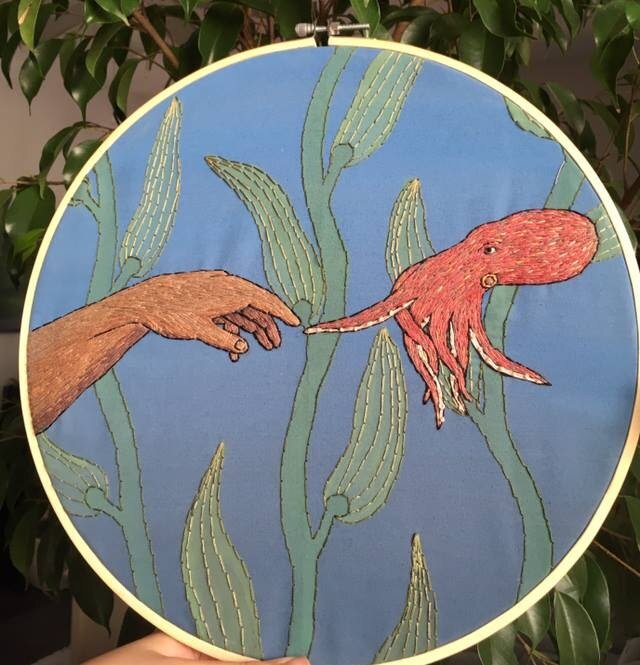
Alison Atchia’s Small Business: Marine Scenes Embroidery
1. What made you start your online shop, Marine Scenes Embroidery?
I had been creating embroideries for about a year before I opened my shop. I was mostly using embroidery as a way to ground my anxiety and grow into my creativity. I was very excited when people started asking if they could purchase some of my embroideries. It means a lot to connect with someone and share an appreciation for marine organisms with art.
2. How does making art influence your love for the ocean and vice versa?
Art has given me a way to express my love for the ocean in a nonverbal way. With my day job as a marine scientist, I practice a lot of explanatory writing to describe how the ocean operates and how it is changing due to anthropogenic stressors. It is refreshing to make something with my hands that doesn't require me to take on that role, the role of the worried researcher, I can just be an observer and appreciator of the ocean.
3. What made you pick embroidery as a medium or an art form?
I have always loved the rich textures you can create with embroidery. When trying to convey ocean ecosystems, there are so many opportunities with thread and fabric. I am also an admirer of clothing design, so being able to take seemingly boring pieces of clothing from the thrift store and giving them new life with embroidery was also very exciting to me.
4. From science to art- talk about the transition, how did you erase that dichotomy?
I first started getting more serious about art when I took an invertebrate biodiversity course during my undergraduate degree. For this course, we had a lab period once a week where we would look at different marine invertebrates and create scientific illustrations of them. These lab periods were coupled with our lectures where we went into detail about the anatomy and physiology of these invertebrates. Taking the time to understand them on a species level and draw them in a way that represents their likeness was a very fun and educational experience for me. I have been passionate about combining art and science ever since.
5. What are the lesser known aspects of running a legitimate business
One of the hardest things about being a small business is being a jack of all trades. You have to make your art, photograph it well, market it, be a customer service representative, and do all the packaging. None of those things is necessarily difficult, but doing them all can be a bit overwhelming at first.
6. Why do you choose to donate your proceeds and where does it go?
One of the best things about making art is connecting with others who appreciate the same organisms and ecosystems you enjoy. All my customers are ocean lovers and many are in the profession of marine science as well. I think as a community it's great to come together and donate to organizations making meaningful changes in ocean conservation. I choose to donate 15% of my profits to Oceana because I am a big fan of their organization. They work to increase marine biodiversity, restore ocean abundance, and protect marine habitats by advocating for science-based policies.
